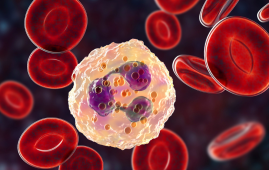

A groundbreaking review published in Atherosclerosis reveals a worrying link between polluted soil and water and the growing global epidemic of cardiovascular disease (CVD). The study shows how toxic chemicals, heavy metals, and microplastics (MNPs) in soil and water are silently increasing heart disease risks—but also points to concrete solutions that could reverse this dangerous trend.
Pollution’s Hidden Link to Heart Disease
Pollution is no longer just about the air we breathe. Soil and water pollution exposes people globally to hazardous chemicals like lead, arsenic, cadmium, microplastics, and pesticides—all of which directly harm cardiovascular health.
According to the study:
- CVDs account for 60% of pollution-related diseases globally.
- Pollution caused 9 million premature deaths in 2019, with cardiovascular conditions leading the toll.
- Polluted soil and water drive oxidative stress, inflammation, hormonal disruption, and artery damage, increasing the risks of hypertension, atherosclerosis, stroke, and heart attacks.
“Pollution from the ground and water may now rival or even surpass genetic factors in driving heart disease risk,” note the researchers.
Key Findings from the Study
Heavy Metals and Heart Disease:
- Lead, arsenic, cadmium, and mercury found in contaminated soil and water are linked to higher rates of heart attacks, strokes, and hypertension.
- Low-level exposure is enough to elevate cardiovascular risks.
- Lead, for example, increases atherosclerosis and blood pressure, even in small doses.
Microplastics and Chemical Pollutants:
- Microplastics (MNPs) from degraded plastics are absorbed into the bloodstream, accumulating in arteries.
- MNPs carry other harmful chemicals like bisphenols and phthalates, worsening artery damage.
- Endocrine-disrupting chemicals (e.g., BPA, PFAS) alter metabolism, leading to obesity, dyslipidemia, and CVD.
Ecological Disruptors Worsening the Crisis:
- Deforestation, overfertilization, urban sprawl, and poor waste management exacerbate pollution.
- Excess nitrogen from fertilizers forms toxic PM2.5 particles, linked to stroke and heart disease.
- Desertification and dust storms contribute to airborne pollutants that worsen CVD risks.
Global Impact of Chemical Pollution on Heart Disease
Pollution-related cardiovascular deaths are staggering:
- Countries like India, China, and Nigeria are among the worst affected.
- Lead exposure alone causes significant disability-adjusted life years (DALYs) lost annually.
- Unsafe water sources, often chemically contaminated, fuel heart disease in vulnerable populations.
Solutions Are Within Reach
While the situation is dire, researchers emphasize that reversing this trend is possible:
Policy and Environmental Action:
- EU’s Zero Pollution Vision by 2050 aims to restore soil and water health.
- Soil restoration initiatives (EU Soil Deal) seek to reverse degradation, enhance carbon storage, and cut toxic exposure.
- Regulating fertilizers, improving waste management, and limiting industrial emissions can sharply reduce pollution.
Medical Interventions:
- Chelation therapy (EDTA-based) can remove heavy metals like lead and cadmium, reducing CVD risk.
- Air and water filtration, avoiding contaminated food, and smoking cessation can reduce personal exposure.
Lifestyle and Diet:
- Antioxidant-rich diets and active lifestyles provide cardiovascular protection.
- Reducing plastic use and supporting green urban planning help limit exposure and enhance health environments.
“Pollution is not an inevitable side effect of modern life. With targeted action, the global burden of cardiovascular disease linked to pollution can be reduced dramatically,” the authors stress.
Conclusions
The review highlights an urgent, yet under-recognized driver of cardiovascular disease: pollution of the earth and water we rely on. These pollutants, from heavy metals to microplastics, are silently fueling a global heart disease crisis—but solutions are available if nations, industries, and communities act.
The integration of pollution control in global cardiovascular prevention strategies could save millions of lives and protect future generations from escalating heart disease burdens.
More Information: Münzel T, Kuntic M, Lelieveld J, et al. The links between soil and water pollution and cardiovascular disease. Atherosclerosis, 2025, DOI: 10.1016/j.atherosclerosis.2025.119160, https://www.atherosclerosis-journal.com/article/S0021-9150(25)00057-7/fulltext
more recommended stories
 Phage Therapy Study Reveals RNA-Based Infection Control
Phage Therapy Study Reveals RNA-Based Infection ControlKey Takeaways (Quick Summary) Researchers uncovered.
 Pelvic Floor Disorders: Treatable Yet Often Ignored
Pelvic Floor Disorders: Treatable Yet Often IgnoredKey Takeaways (Quick Summary) Pelvic floor.
 Urine-Based microRNA Aging Clock Predicts Biological Age
Urine-Based microRNA Aging Clock Predicts Biological AgeKey Takeaways (Quick Summary) Researchers developed.
 Circadian Control of Neutrophils in Myocardial Infarction
Circadian Control of Neutrophils in Myocardial InfarctionKey Takeaways for HCPs Neutrophil activity.
 E-Cigarette Use and Heart Attack Risk in Former Smokers
E-Cigarette Use and Heart Attack Risk in Former SmokersKey Takeaways for Clinicians and Nurses.
 Ultramarathon Physiology: What HCPs Should Know?
Ultramarathon Physiology: What HCPs Should Know?Ultramarathon Metabolism: What Happens to the.
 Sterilized Fermented Beverage for Obesity: New Evidence
Sterilized Fermented Beverage for Obesity: New EvidenceEarly Insights Into a Sterilized Fermented.
 36-Week Pre-eclampsia Screening May Reduce Term Risk
36-Week Pre-eclampsia Screening May Reduce Term RiskA New Preventive Strategy for Term.
 Cardiovascular Risk and Sudden Cardiac Death in Diabetes
Cardiovascular Risk and Sudden Cardiac Death in DiabetesRising Sudden Cardiac Death (SCD) Risk.
 Poor Kidney Function and Alzheimer’s Biomarkers Explained
Poor Kidney Function and Alzheimer’s Biomarkers ExplainedPoor kidney function may influence levels.

Leave a Comment